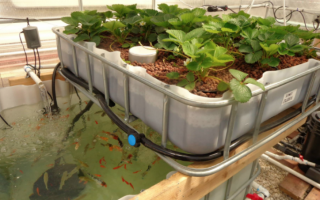Raising fish in containers on land is eco-friendly, next, vegetables.
For bloggers
Do you want to manage all news about Eco-Tech-Agro Business?
you manage the blog, you earn the money.
Contact us here
for companies
Make business in all bilateral trades. Specially from West countries to African countries, related with projects in Africa, HR solutions, circuit business, local and sustainable tourism business, tech-agro-eco- business (areoponic systems, agroships...), win win business, beneficial business (not charity) etc.
for institutions
West in debt with Africa. We can help to rotate your African country step by step.
This new from bcBusiness.ca
Raising fish in containers on land is eco-friendly. The next step is growing vegetables in the same water
Although aquaponics is still in its infancy, Fort Langley–based West Creek Aquaculture and others see potential for this alternative to conventional agriculture
Is salmon raised on land the future of seafood?” asked National Geographic in a story about Kuterra LP, a farm established in 2013 by the ’Namgis First Nation in Port Hardy on Vancouver Island to raise Atlantic salmon in tanks. West Creek Aquaculture in Fort Langley has produced tank-raised rainbow trout for 20 years and began selling coho and sockeye salmon in 2013. Yet West Creek owner Don Read says land-based aquaculture is a still an immature industry. “Politicians and activists suggest it is the alternative to ocean-based salmon, but it is nowhere near a stage to be an alternative to ocean-grown salmon,” he explains.
The fish from B.C.’s handful of land-based aquaculture farms are considered sustainable, with Ocean Wise certification from the Vancouver Aquarium. The farms use no antibiotics, hormones or chemicals, and they compost the fish waste.
Instead of composting the waste, West Creek has experimented with aquaponics, growing vegetables in the same water as the fish so the effluent nourishes the plants, which in turn clean the water. Although plant yield increased, Read found that he couldn’t compete with traditional vegetable growers. He’s still looking for a way to monetize fish effluent as plant fertilizer, but he thinks aquaponics is best suited for farmers in the business of plant, not fish, production.
Crops raised using aquaponics actually tend to be more profitable than the fish, according to U.S. studies. The key is marketing them to compete with other local and organic greens. Andrew Riseman, an associate professor of applied biology and plant breeding at UBC, believes aquaponic produce is superior to both conventionally grown and organic. “But until there’s product differentiation in the marketplace where they can get a premium for that specific product, they’re just lumped in with organics or chemical-free or pesticide-free or whatever other generic grouping they fit into,” he says. “Much like the land-based fish production—they’re grouped in with farmed salmon.”
Matthias and Jutta Zapletal established their Prince George aquaponics operation, Northern Bioponics Ltd., in 2010. They produce about 80 kilograms of lettuce, 10 to 20 kilograms of basil and 10 to 20 kilograms of microgreens each week, some of which they sell at the local farmers market to several restaurants and a small health store. They also sell 250 to 300 tilapia a year. “Aquaponics is a system where you have a decent-size greenhouse where you can grow a bunch of vegetables, where you can make some money, but forget that you can feed the world with it,” Matthias says.

Iowa State University aquaponics researcher D. Allen Pattillo disagrees. In a March 2017 bulletin for the U.S. Department of Agriculture’s North Central Regional Aquaculture Center, Pattillo claims aquaponics can be done on a wide range of scales, from a home aquarium to a multi-acre commercial facility capable of producing substantial amounts of fish and plants. Plus, he notes, aquaponics uses about 10 per cent of the land area and five per cent of the water needed for conventional agriculture, making it ideal for intensive urban gardening.

